Woven Wire Basics
Banker Wire manufactures coarse, pre-crimped woven wire mesh in a range of wire spacing from 12 mesh up to 6″ clear opening. We manufacture over 8,000 different spacing, diameter, and crimp combinations and customization is readily available with our in-house tool making capabilities.
What is Pre-Crimped Woven Wire Mesh?
Pre-crimped woven wire mesh is constructed of wires that have been crimped prior to weaving them together in a loom. Crimping the wires before weaving provides stability and consistency in larger spaced wire mesh. Various crimping styles have been developed over the years to improve manufacturing efficiencies, function, and aesthetics.
The information below covers the basics of woven wire mesh and topics to consider when choosing the right product for your application. Our knowledgeable staff is standing by to help you with your next requirement.
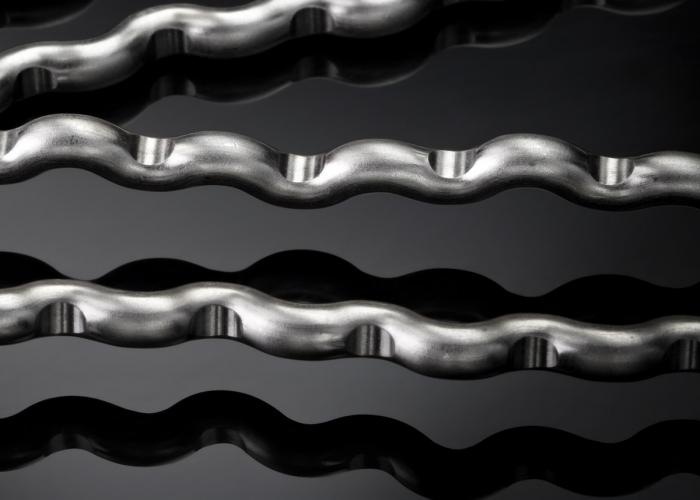
How Banker Wire Makes Pre-Crimped Woven Wire Mesh
Curious about how wire mesh is manufactured on a loom? This video demonstrates how pre-crimped wire mesh is woven on both an automated and manual loom.
Individual lengths of wires are sent through a crimper to establish both warp wires (Long wires) and fill wires (Cross wires). The warp wires are individually positioned through the loom’s heddle frames. The heddle frames provide the movement that creates the “Shed” in which a cross wire will be inserted manually or automatically. Once the cross wire is in position, the loom’s sleigh will force it into the next available crimp pocket on the warp wires. Then, the heddle frames will reposition creating the “Over/Under” sequence.
Crimp Styles
The woven wire and wire crimping process is critical in producing consistent, top quality woven wire mesh. Banker Wire continues to be the innovative force in architectural wire mesh manufacturing by exploring new ways of crimping and weaving wire. The following will provide more detail about the eight fundamental crimp styles: Plain, Lock, Intercrimp, Flat Top, Triple Shoot, Rigid Cable, Helix, and Twill. These styles are building blocks and can be combined and modified to produce endless compositions of texture and reflectivity.
What are wire mesh crimp styles? Wire mesh crimp styles are crimp patterns(several patterns available) which are used to create top quality wires, which are then used in larger woven patterns for industrial needs.

Plain Crimp is a simple zigzag style of crimping where warp and fill wires intersect at every available pocket. With Pre-Crimped material, the Plain Crimp is most common when Mesh to Diameter (MD) Ratios are 4:1 or less. This un-tooled look produces a smooth and subtle pattern. Our designation for this crimp style is PL.


Lock Crimp is a more modern and very versatile crimp style that has been largely overlooked for architectural applications. Unlike Plain Crimp, Lock Crimp is characterized by straight sections of woven wire connected by a well-defined ‘bump’ at the wire intersections. Lock Crimp yields material with superb dimensional stability and has a clean look that many designers find visually appealing. Lock Crimp works well at practically any MD ratio of 4:1 and greater.Our designation for this crimp style is LC.


Flat top is really a modified version of Lock Crimp, except that all the crimping is offset to one side of the material. The result is a smooth plane in which all of the wire surfaces are flush with one another to give a flat appearance to the front of a Flat Top piece. The back side shows crimps approximately twice the height of a Lock Crimp. Originally developed to present a smooth surface to material flow, or as a backer screen for finer mesh, Flat Top is also used extensively in architectural applications. Our designation for this crimp style is FT.


While not really a fundamental crimp style, we choose to list it with the other crimp styles because of its widespread use. Intercrimp is simply Plain Crimp except that wire intersections occur only at every 3rd, 5th, 7th intersection, etc. This type of woven wire weave is practical only at MD ratios of 6:1 or more, and is best suited for ratios of 8:1 or more. We designate this style of weave as I3, I5, I7, etc. Our designation for this crimp style is I#.


Triple Shute is a specialty crimp style that is generally used in conjunction with another crimp style. It consists of relatively long sections of straight wire connected by groupings of three Plain Crimp pockets of woven wire. The resulting material has rectangular openings of very high aspect ratio. Developed originally as a non-blinding sizing product, it also has interesting architectural properties. Our designation for this crimp style is TS.


Rigid Cable is a variant of the triple shoot crimp style, but instead of having the clusters of three closely spaced wires separated by a small space, Rigid Cable has its clusters of wires (generally 2, 3, or 4) spaced tightly together with no gaps between adjacent wires. While some manufacturers produce this style of material by simply pressing groups of wires together, Banker Wire places special crimps in the surface of the wire. This technique assures absolute repeatability in the mesh spacing and eliminates any problems associated with cumulative pitch variation. Cumulative pitch variation can result in aesthetic problems when attempting to align multiple panels. Our designation for this crimp style is PS.


The Helix is a new crimp style with enormous design potential. For years, the woven wire mesh industry has been limited to making squares, rectangles, and diamonds. Banker Wire introduces a design that represents a whole new category of wire mesh construction. Naturally flowing circular shaped openings are created when intersecting the helical wires. The smooth lines created by the spiral shaped wires give this mesh a soft and tranquil look and feel. The helix can also be combined with any other fundamental crimp style, creating a truly unique woven wire mesh pattern. Our designation for this crimp style is HX.


Exploring further into traditional weave styles, Banker Wire refines the classic twill style weave for architectural purposes. Traditionally, the Twill style weave allows for a tighter mesh to diameter ratio which reduces the need to form the wire beyond its physical limitations. Four independent heddle frames on the loom allow for complex wire positioning that create a number of parallel diagonal pattern configurations. Pre-crimping a twill style wire mesh allows complete control of the unique visual detail, emphasizing the herringbone pattern in a large scale woven wire mesh. Our designation for this crimp style is TW.

Woven Spacing/Opening/Diameter Relationship
The basic relationship between wire spacing, wire diameter, and clear opening can be expressed by a simple algebraic relationship:
Wire Spacing = Wire Diameter + Opening Size
Opening Size = Wire Spacing – Wire Diameter
Wire Diameter = Wire Spacing – Opening Size

The variety of crimping styles and methods used in achieving Banker Wire’s unique aesthetic can alter the shape of the wire. For a true measurement of wire diameter, carefully consider where the measurement is taken.
Wire Spacing
What is wire spacing? Wire spacing (also called mesh spacing) can be defined either as a measured distance expressed in inches, or as the number of opening per lineal inch expressed as a count. Beware! Countless errors have occurred due to confusion between 2 mesh (1/2″ on centers) and 2″ mesh (2″ on centers).
2″ Mesh .192 (L-62)
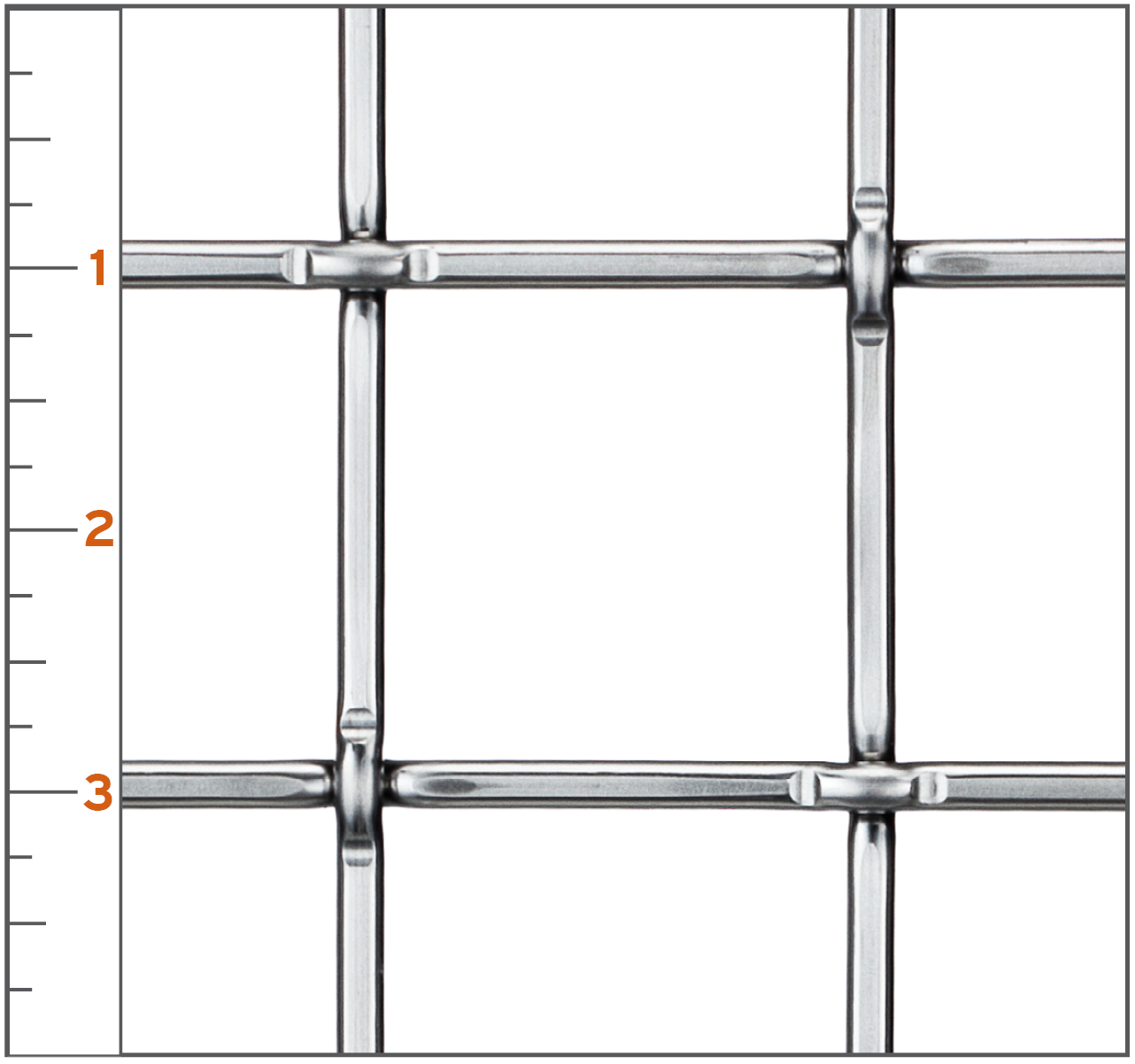
2 Mesh .120 (L-427)

Wire Diameter
Most industrial specifications are produced with round cross section wire. Whenever possible, refer to the wire diameter in decimals of an inch, rather than gauge. Confusion between ferrous and non-ferrous gauge numbers and sheet steel numbers results in incorrect wire diameters being specified. Standard wire diameters used are as shown in this graphic.


Shaped Wire
Banker Wire offers a variety of wire mesh made with shaped wire. Below are some examples of the square wire, flat wire, and fluted wire that we offer. For more information on our shaped wire offerings, please contact us.
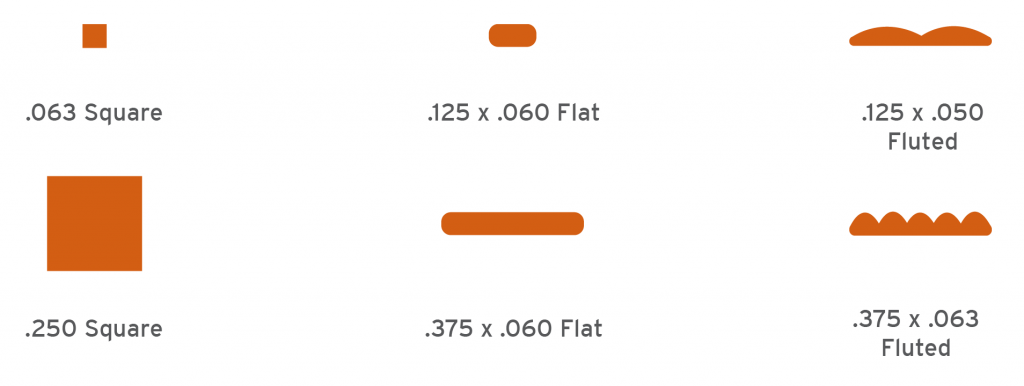
Weight and Conversions
Below is a list of common generic metals we turn into wire mesh every day. All of our weights listed on spec sheets and in our product databases are based on the specific gravity of plain/mild steel. The percentages in the chart below should be used to convert the weight from plain steel to the desired alloy.
| Wire Mesh Weight Conversion | |
| Plain Steel | 100.00% |
| Aluminum | 34.40% |
| Stainless Steel | 102.00% |
| Copper | 113.90% |
| Bronze | 108.30% |
| C230 Brass | 107.00% |
| C270 Brass | 112.50% |
| Monel | 109.6% |
| Nickel | 113.20% |
| Titanium | 57.60% |
Below are two examples of how we use the above chart to calculate weight of different alloys. In these examples we use L-441, which from the spec sheet we know has a plain steel weight of .862 pounds per square foot (lb/SF).
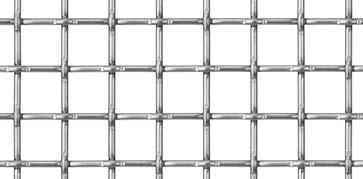
To determine the weight of L-441 in aluminum, the plain steel weight (.862) should be multiplied by 34.4%. The equation is shown below.
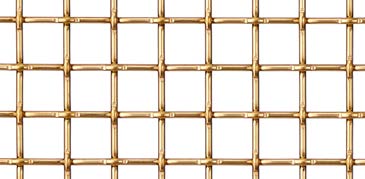
To determine the weight of L-441 in bronze, the plain steel weight (.862) should be multiplied by 108.3%. The equation is shown below.
Percent Open Area (POA) and Mesh to Diameter Ratio (MD)
Percent Open Area (POA) is the ratio of hole area to total screen area at a 90° angle of incidence to the plane of the material, expressed as a percentage. Material with 40% open area will have 40 square inches of opening for every 100 square inches of material. Percent open area helps in comparing various materials as to how easily a product, air, or light, will pass through the screen. In the visual below, we placed an apple behind the example mesh to demonstrate how the POA affects what can be seen.
Mesh to Diameter Ratio (MD) is the mesh spacing (center to center) divided by the wire diameter. As a manufacturer, this is very useful to us as MD is used to help determine the optimal crimp style to use in the various mesh to diameter relationship scenarios. By selecting the most favorable crimp style, we are able to provide a higher quality mesh more efficiently. Aesthetically, the lower the MD ratio, the more heft the wire mesh will appear to have; the higher the MD ratio, the less heft a mesh will appear to have.

POA = 35%
MD = 2.38
3/8″ Mesh .162 (P-126)

POA = 47%
MD = 3.17
2 Mesh .162 (P-49)

POA = 62%
MD = 4.76
3/4″ Mesh .162 (L-114)

POA = 80%
MD = 9.52
1.5″ Mesh .162 (L-139)
Aspect Ratio
Aspect Ratio is a useful way to characterize materials that have slotted openings or rectangular repeat patterns. It is the ratio of the larger pattern repeat distance to the smaller pattern repeat distance. Banker Wire woven wire mesh can be customized to achieve a variety of aesthetics. Shown in the railing mock-up below we have inserted four different aspect ratios to show you the difference in appearance.

Standard Measurements & Tolerances for Woven Wire Mesh
Banker Wire strives to manufacture the highest quality woven wire mesh on the market today, as such, we have developed a set of standard measurements and tolerances for our products. Our tolerances have been determined from historical product manufacturing and are tested and improved upon constantly to ensure the best wire mesh possible. Aside from these developed tolerances, Banker Wire meets and exceeds the standards set forth in ASTM Standard E2016-06: Standard Specification for Industrial Wire Cloth.
An explanation of our measurements and tolerances can be found in the PDF download.
ASTMs for Woven Wire Mesh
Standard Specification for
Industrial Woven Wire Cloth (ASTM E2016 – 20)
Banker Wire manufactures industrial woven wire mesh per ASTM 2016. The woven wire mesh ASTM provides tolerances to apertures, wire diameters, permissible blemishes associated with a specific wire mesh range of specifications.
Standard Specification for
Woven Wire Test Sieve Cloth and Test Sieves (ASTM E11 – 20)
Banker Wire produces sieve cloth that is manufactured for the purpose of particle size analysis in manufacturing and laboratory settings. Our sieve cloth is manufactured per ASTM E11 which holds the mesh apertures at a higher degree of tolerances.

